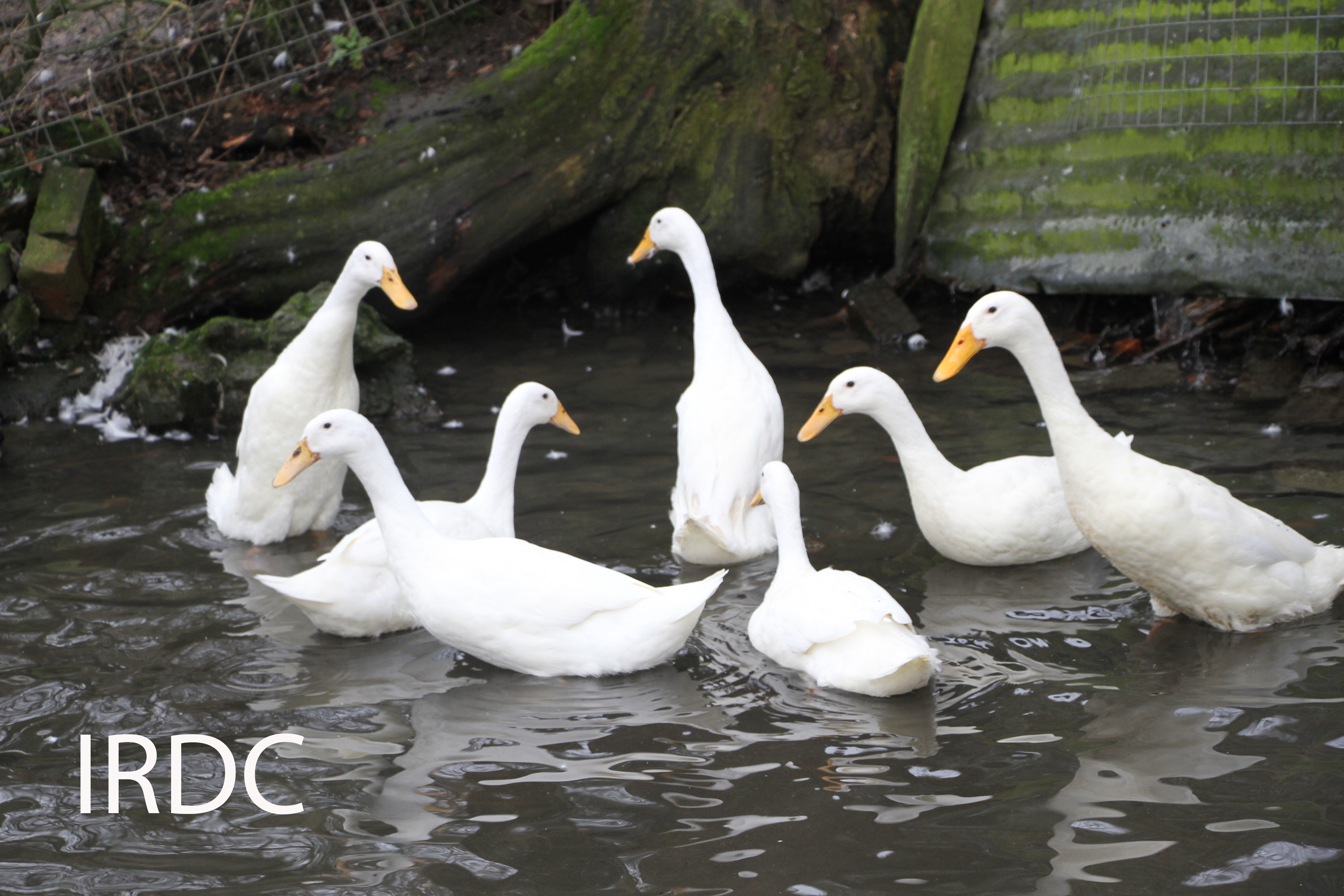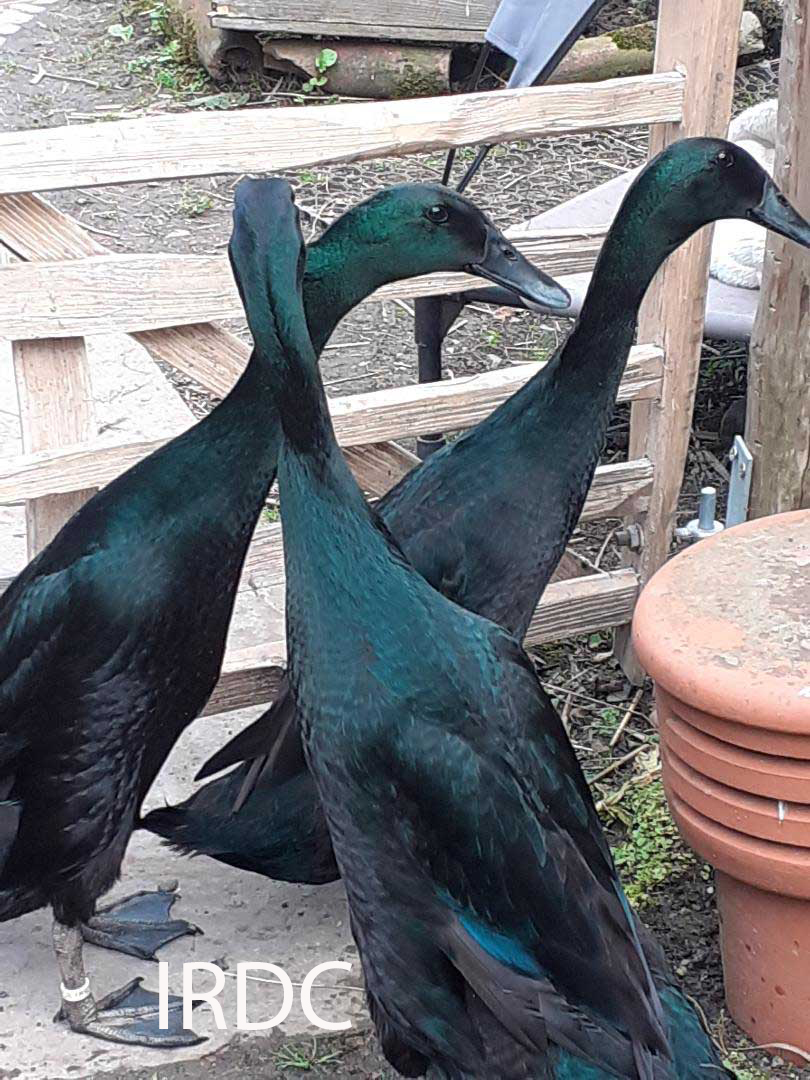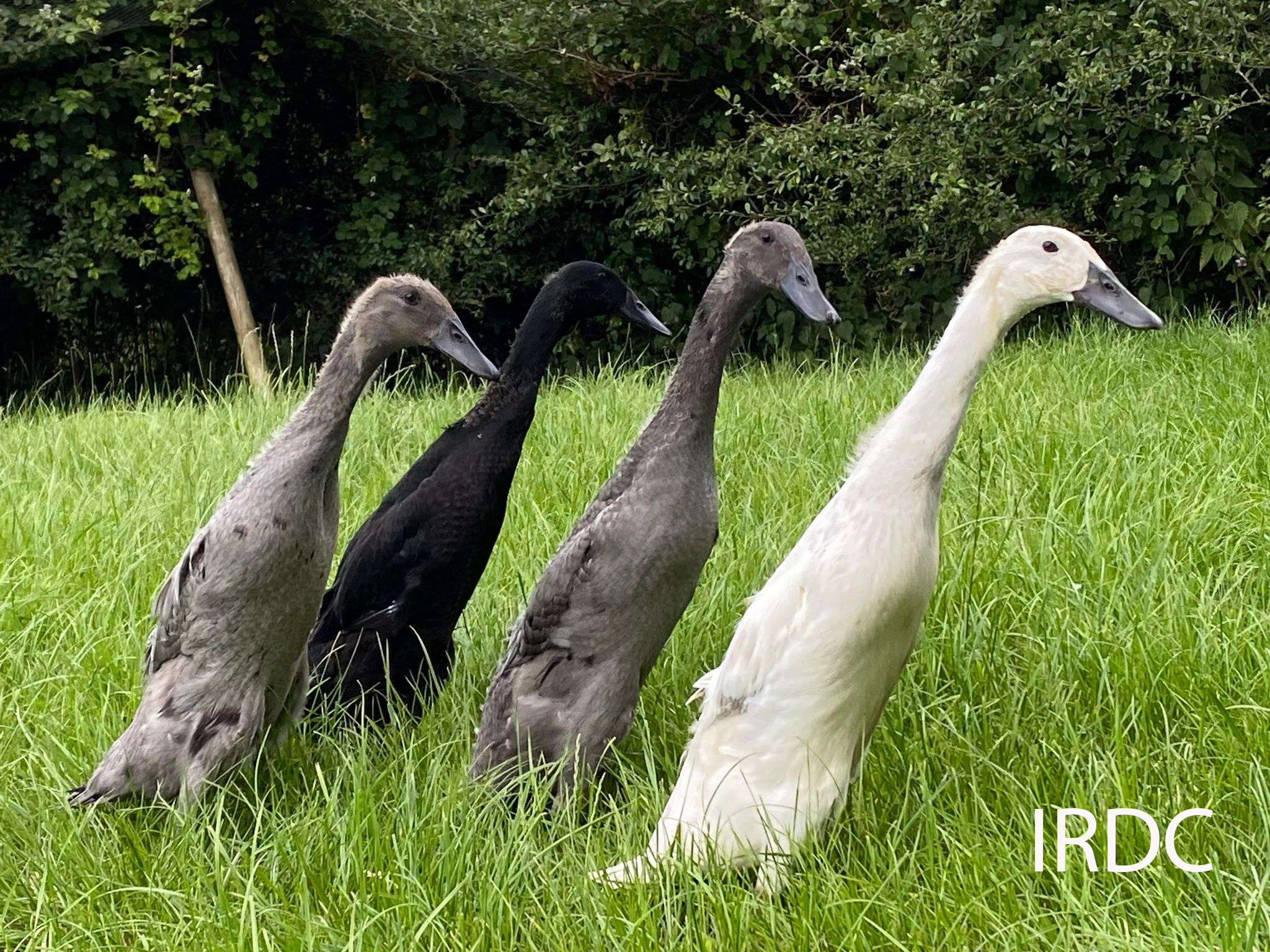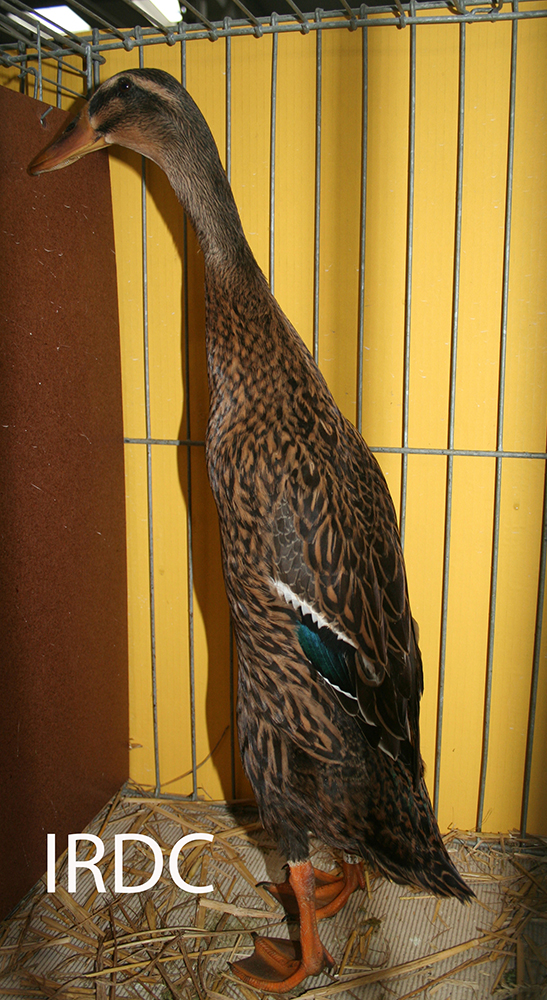Photo Gallery - Exhibition Colours of Indian Runners
All photos by C & M Ashton, J Rigby and M Stapleton Harley
Exhibition colours of Indian Runners are limited to just a few combinations of the colour mutations of the domesticated mallard duck. Worldwide, breeders and exhibitors have tended to stick with Black, White, Fawn & white, Trout and Mallard. In addition, there can be blue (Bl/bl) and apricot (Bl/Bl) varieties.
White
 Visually, white is simple because white (c/c) masks underlying colours. They have orange-yellow bill and legs.
Visually, white is simple because white (c/c) masks underlying colours. They have orange-yellow bill and legs.Black

 Black juvenile females, and adults with the desirable green sheen. Although black (E/E) will cover most colours, it won’t cover white spotting, and it is difficult to develop black birds which breed true.
Black juvenile females, and adults with the desirable green sheen. Although black (E/E) will cover most colours, it won’t cover white spotting, and it is difficult to develop black birds which breed true. Added to Black birds, the blue gene causes further complications. Cumberland Blue is Black (E/E) with Blue (Bl/ bl). Such birds go ‘white’ when they are homozygous blue (Bl/Bl). Add, brown, and they are lilac in colour. In addition, Chocolate Runners are (E/E) plus brown. They all retain the dark bill and dark coloured legs.
Added to Black birds, the blue gene causes further complications. Cumberland Blue is Black (E/E) with Blue (Bl/ bl). Such birds go ‘white’ when they are homozygous blue (Bl/Bl). Add, brown, and they are lilac in colour. In addition, Chocolate Runners are (E/E) plus brown. They all retain the dark bill and dark coloured legs.Fawn & White (Pencilled)
 Fawn & white Runners were established in Indonesia and limited evidence indicates they were imported into Holland and the UK as early as the 1700s. Their pied pattern is produced by their Runner gene (R/R). This variety is called Pencilled in the USA.
Fawn & white Runners were established in Indonesia and limited evidence indicates they were imported into Holland and the UK as early as the 1700s. Their pied pattern is produced by their Runner gene (R/R). This variety is called Pencilled in the USA. The Bl/Bl (apricot) version of (R/R) is known as the American Fawn&white. The birds in this photo are only (Bl/bl) i.e. heterozygous for blue. To complicate the colours, Fawn&whites also carry the brown gene. Where the brown gene is lost, the colour is harsher, and the birds are called Emery Pencilled in the USA.
The Bl/Bl (apricot) version of (R/R) is known as the American Fawn&white. The birds in this photo are only (Bl/bl) i.e. heterozygous for blue. To complicate the colours, Fawn&whites also carry the brown gene. Where the brown gene is lost, the colour is harsher, and the birds are called Emery Pencilled in the USA.Fawn Runners
 Fawn drake (right) and two blue dusky drakes – different ‘shades’ because of additional modifier genes. Fawn female.
Fawn drake (right) and two blue dusky drakes – different ‘shades’ because of additional modifier genes. Fawn female.Fawn Runners, in the exhibition world, seem to be unique to the UK. They were imported from Java and Bali – where similar birds can be seen today. Their dusky mallard (md) and light phase (li) may well be Indonesian colour mutations. In the UK, they became very popular after Walton imported the Fairy Fawns in 1909.
They continue to be one of the main UK colours and have branched out (with the blue gene) into Blue and Apricot duskies.
In the USA there are equivalent colours in dark phase (Li/Li) where dusky (no eye stripes) also means no bib.
Mallard and Trout Runners

 The USA and Germany have made the Mallard Runner (dark phase mallard) a major exhibition colour. This mallard colour may have come from crossing imported Indonesian birds with the European wild mallard, because Mallard is not a typical colour in Indonesian rice-paddy duck flocks.
The USA and Germany have made the Mallard Runner (dark phase mallard) a major exhibition colour. This mallard colour may have come from crossing imported Indonesian birds with the European wild mallard, because Mallard is not a typical colour in Indonesian rice-paddy duck flocks. The Germans also developed the Trout Indian Runner which is popular in Europe, and increasingly so in the USA and Australia. It differs from the Mallard Runner in that it is light phase (li/li) rather than dark phase (Li/Li).
The Germans also developed the Trout Indian Runner which is popular in Europe, and increasingly so in the USA and Australia. It differs from the Mallard Runner in that it is light phase (li/li) rather than dark phase (Li/Li).Silver Runner UK
 German Abacot Ranger (Streicher) ducks were probably used to introduce harlequin phase (lih/lih) to Runners. This is a popular colour because of the lighter ground colour showing up the intricate feather patterns. The Australian Harlequin Runner also has the brown gene.
German Abacot Ranger (Streicher) ducks were probably used to introduce harlequin phase (lih/lih) to Runners. This is a popular colour because of the lighter ground colour showing up the intricate feather patterns. The Australian Harlequin Runner also has the brown gene.See the German Runner Duck cub for futher details of colours. www.laufenten-sv.de/laufenten.html ![]()
Keeping colours pure for exhibition is not easy, especially where there are demands for feather colour combined with bill colour and eye colour plus leg/foot colour as well. There is a more-or-less infinite number of mixed-up colours which can be produced by cross breeding Runners. All that does is to mix up the historic and most aesthetically pleasing forms – and make it absolutely certain that birds will not breed true. The supposed ‘Appleyard’ colour has badly affected Trout and Silver which are perceived as similar to ‘Appleyard’ (when they are not).
Page created 8th November 2023